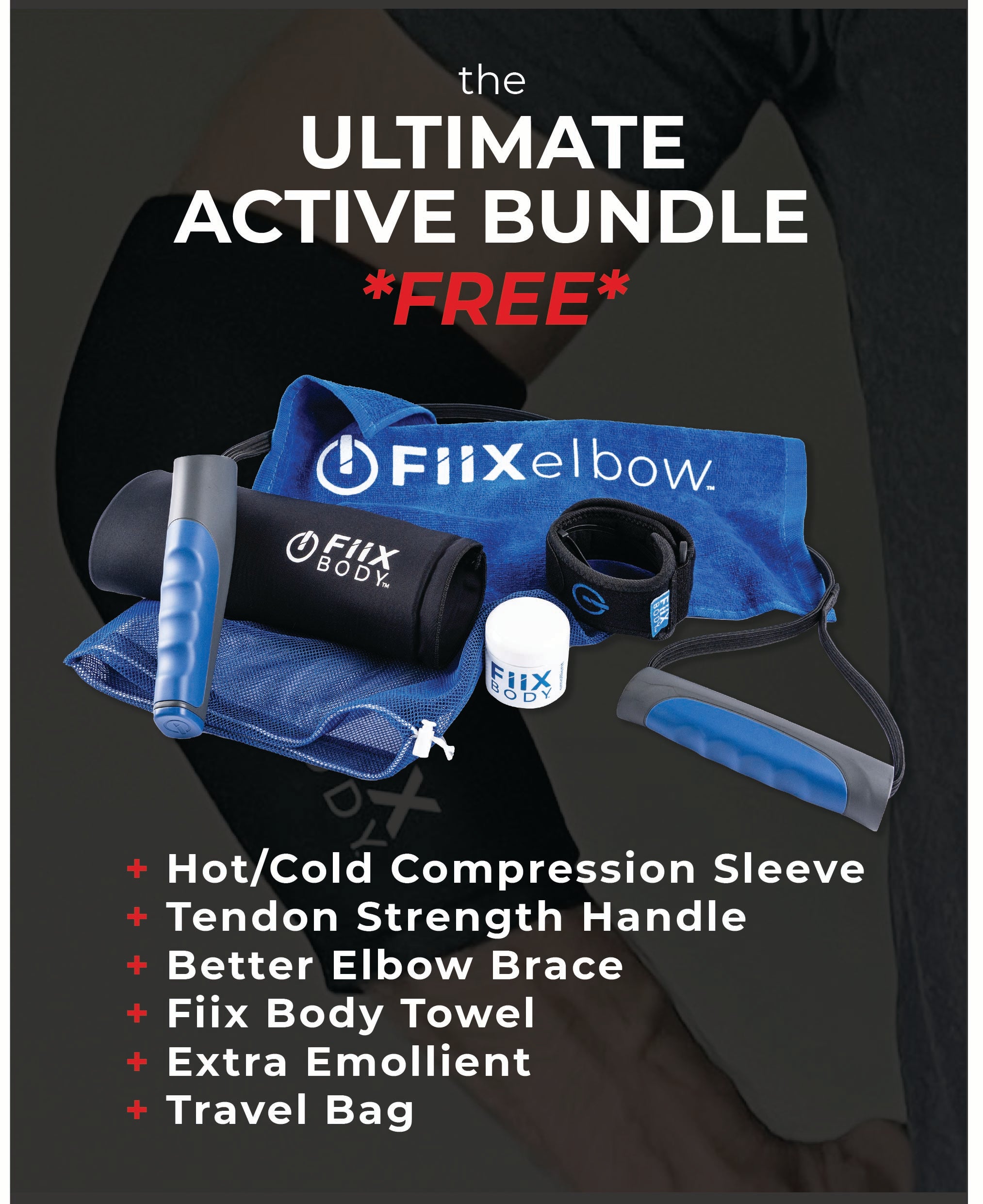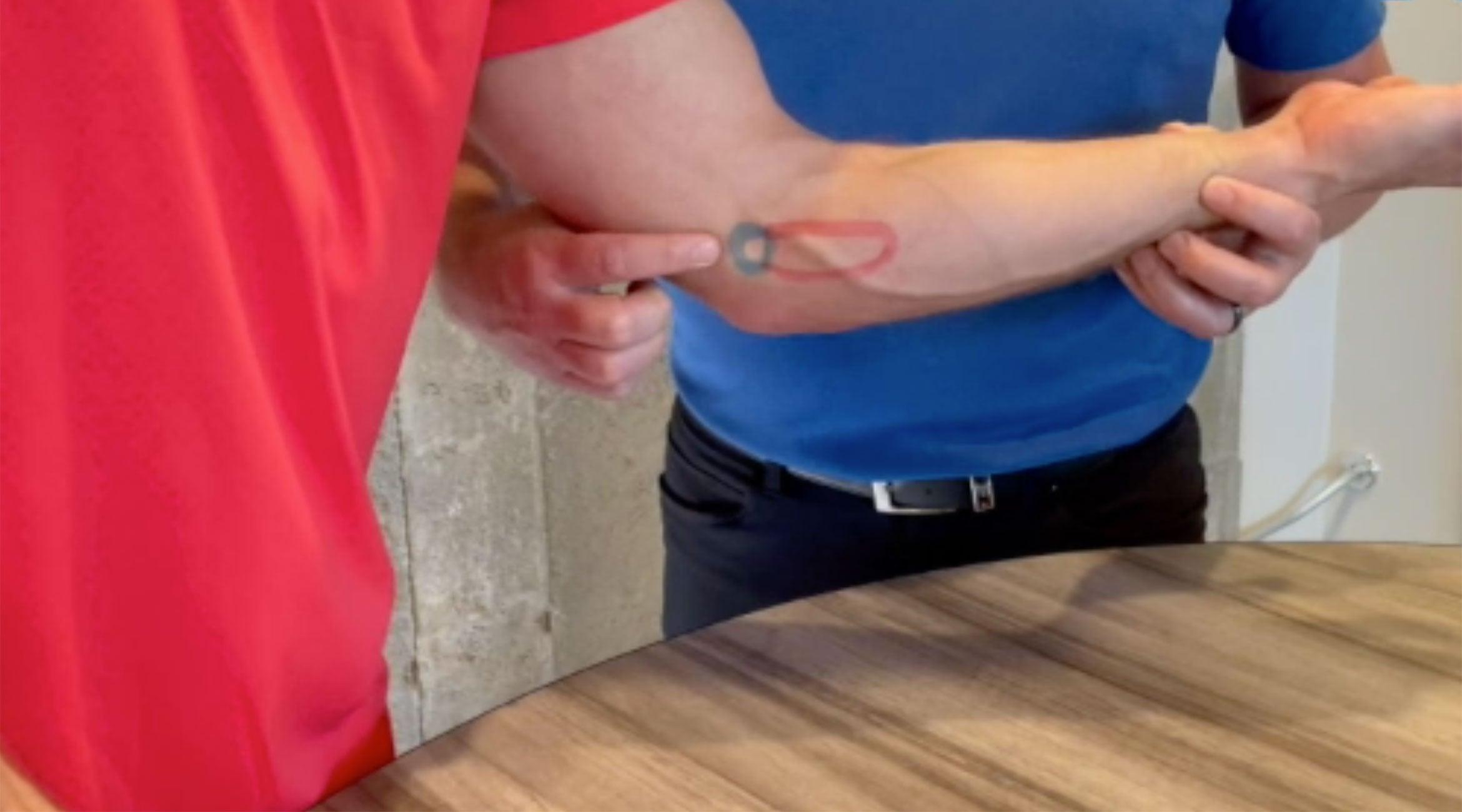Tennis elbow affects the lateral epicondyle tendon, which connects to the bony bump of the humerus (upper arm bone) at the outside (thumb side) of the elbow. In golfer’s elbow, known as medial epicondylitis, the medial epicondyle tendon is impacted, and pain occurs on the inside of the elbow at the epicondyle.
Tennis elbow is caused by repetitive strain of the wrist extensors, which are on the back of the forearm and extend the wrist. Golfer’s elbow impacts the wrist flexors, which are on front of the forearm and flex the wrist.
Causes of golfer's elbow
You don’t have to play golf to suffer from golfer’s elbow; in fact, 90-95 percent of cases occur in non-golfers. Anyone who uses their forearms, wrists and fingers to perform repeated motions – especially forceful ones – typically for more than two hours per day – can be affected.This includes painters, plumbers, landscapers, manufacturing and construction workers, carpenters, pitchers, quarterbacks, rock climbers, weight trainers and more. Men over age 35, smokers and those who are obese are also at higher risk.
The repeated stress on the tendons from these common activities, or from improper technique when performing these motions, causes tiny tears that can lead to inflammation, pain and gradual degeneration.
Symptoms of golfer's elbow
The most common symptom of golfer’s elbow is pain and tenderness on the inner side of the elbow, and sometimes into the forearm. This discomfort can be felt at rest as a dull ache and during movement as a shaper pain or twinge, and can gradually increase over time as the condition of the tendon worsens.Joint stiffness is also a symptom of golfer’s elbow, along with weakness in the hands and wrists, whereby it can be difficult to make a fist, grip items and shake hands. Numbness or tingling may occur down the forearm and into the ring finger and pinky finger.
Golfer’s elbow may not disappear on its own, as tendons have limited blood supply to encourage healing, so it’s advised to treat the condition. To diagnose golfer’s elbow, physicians likely will assess your activities, ask you a series of questions, perform an exam and have you perform manual exercises. Sometimes, they will order an X-ray, MRI or EMG test as well.
Treatment of golfer's elbow
The good news is that almost all cases of golfer’s elbow can be successfully treated non-surgically. Initial recommendations include rest to reduce the strain on the forearm and wrist, along with ice and over-the-counter non-steroidal anti-inflammatory drugs, such as ibuprofen.Additional interventions include:
- Golfer's Elbow braces, straps and compression sleeves provide external joint support, which temporarily stabilize the joint and decrease the pressure on the tendon.
- External manipulation. Physical therapists, chiropractors and massage therapists can use ultrasound, TENS, EMS and manual techniques to alleviate pain and stimulate blood flow to the area.
- Extracorporeal shockwave therapy (ESWT). Small shock or pressure waves are transferred to the tissue through the skin to encourage blood flow.
- Stretching and strengthening exercises. Physical therapists can oversee a regimen of golfer's elbow stretching and strengthening exercises to improve functioning and range of motion at the elbow joint. In addition, they can perform instrument-assisted soft tissue mobilization (IASTM) to break down adhesions, activate blood flow and stimulate cellular regeneration to help stimulate healing.
- Injections. Cortisone or platelet-rich plasma (PRP) injections into the site can reduce inflammation and relieve pain in the short-term, but additional treatments usually are necessary.
- Surgery. This is a last-resort option, if all other therapeutic interventions haven’t been satisfactory after six to 12 months. In open or arthroscopic surgery, the surgeon removes the damaged portion of the tendon and reattaches it to the bone. Three to six months of recovery and rehabilitation follow.
One newer, convenient option to treat golfer’s elbow at home is the Fiix Elbow device from Stā Active, which automates IASTM and has a manageable regimen of 10 minutes per day, two to three times per week for eight weeks, along with simple stretching and strengthening exercises.
The Fiix Elbow program has been shown in patient trials to be effective in reducing pain, improving grip strength and restoring function for tennis elbow and golfer’s elbow. Plus, this easy treatment eliminates insurance deductibles and co-pays and appointment scheduling hassles, and can be used over time if periodic flare-ups occur.
Prevention of golfer's elbow
To prevent golfer’s elbow, consider the following recommendations:- Regularly perform strengthening exercises and stretch the forearms to maintain strength and range of motion
- Stretch before activity
- Have a golf instructor or pro evaluate your technique to ensure proper form and avoid overload
- Invest in good equipment, like lighter graphite clubs
- Take breaks when possible
- Always use proper lifting technique



Share:
Tennis elbow from DIY projects
Are tennis elbow straps effective?